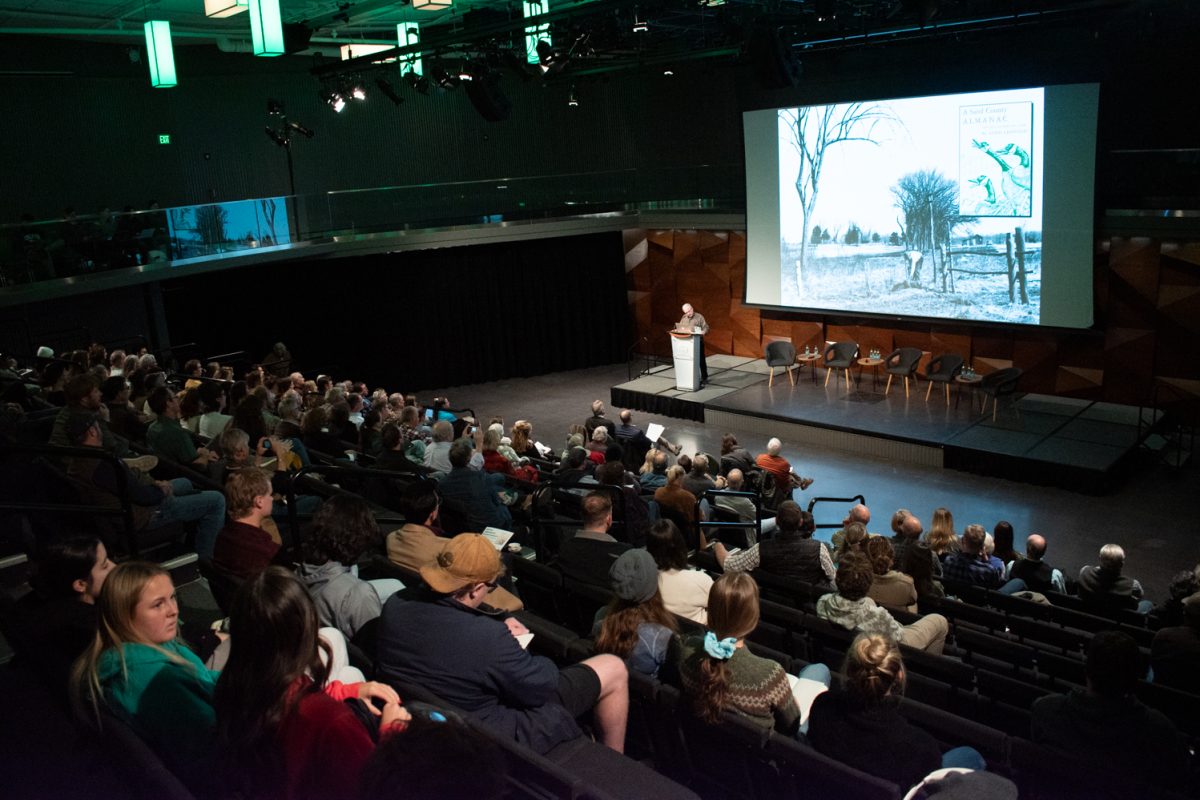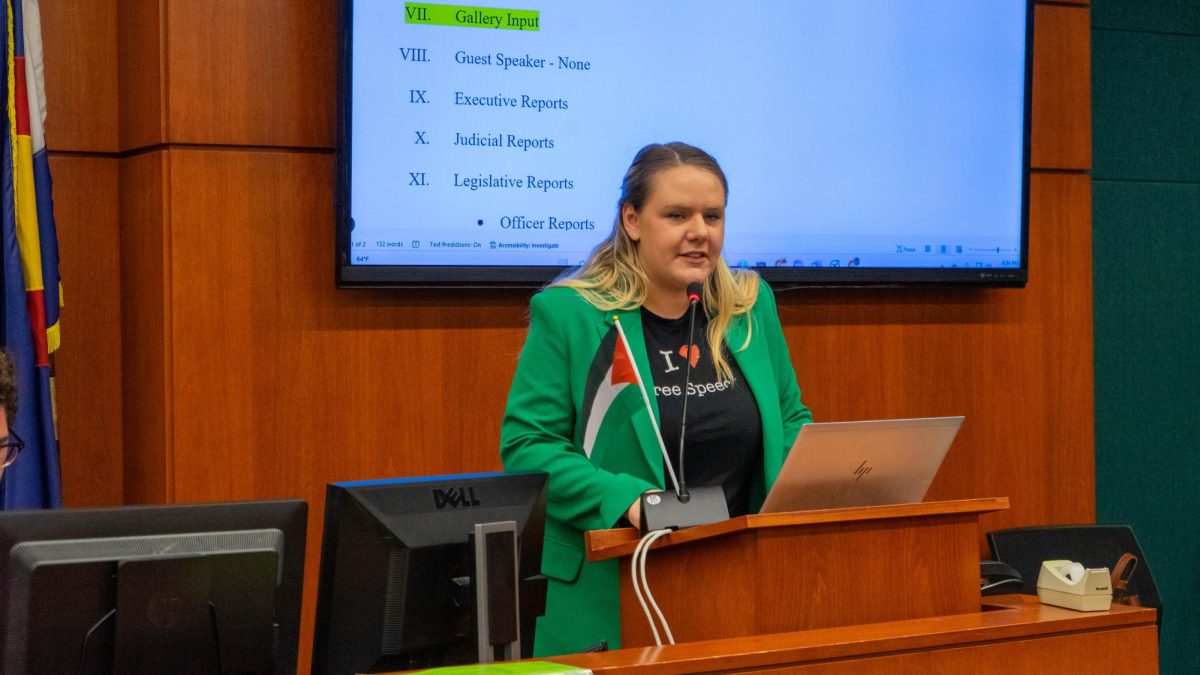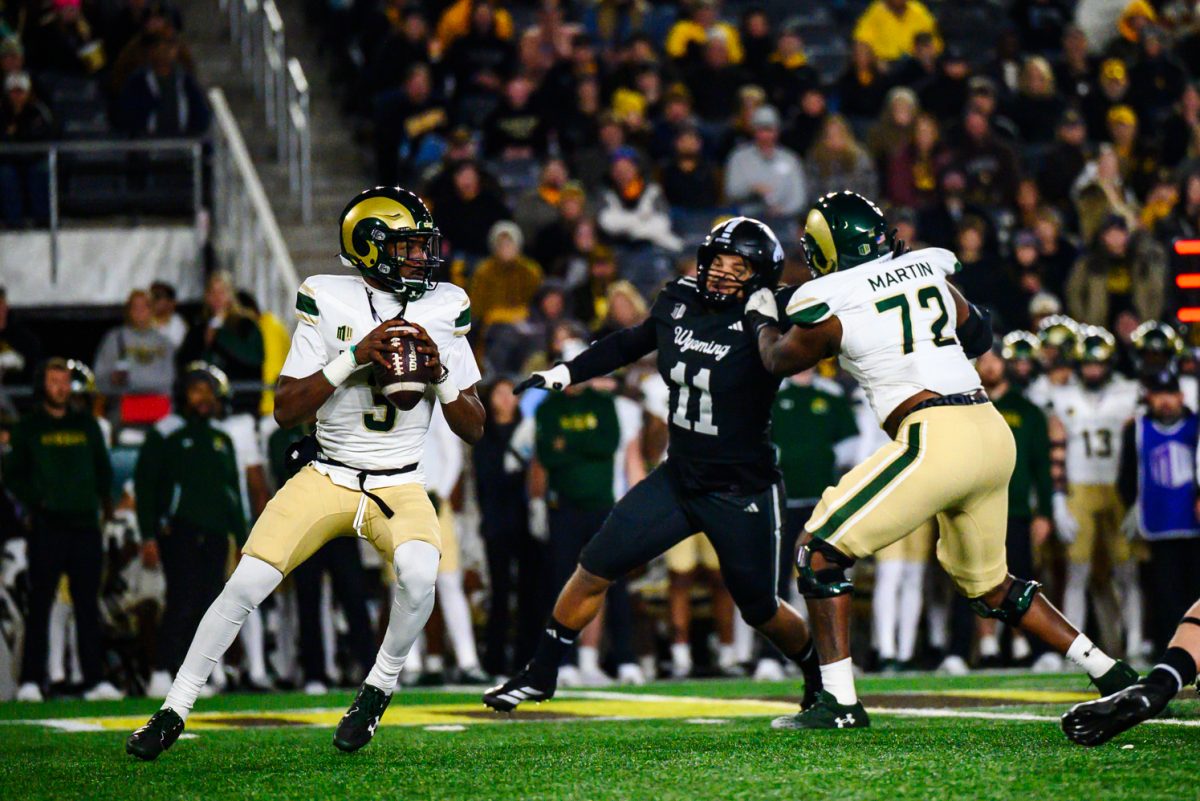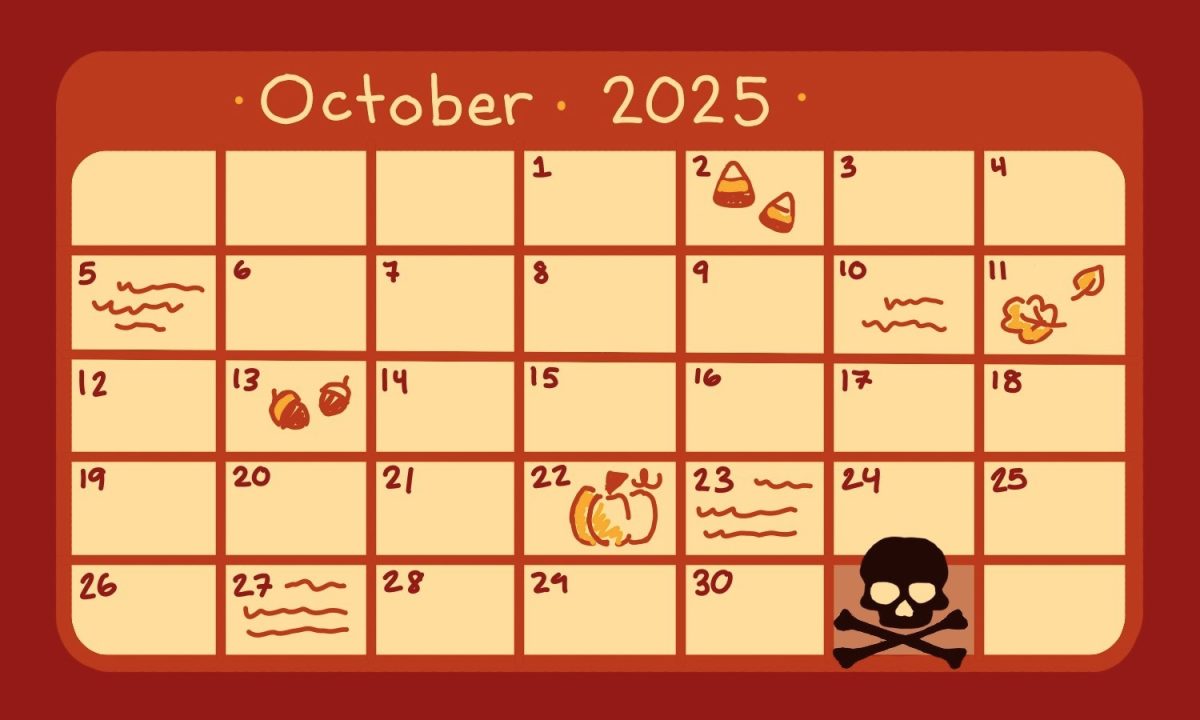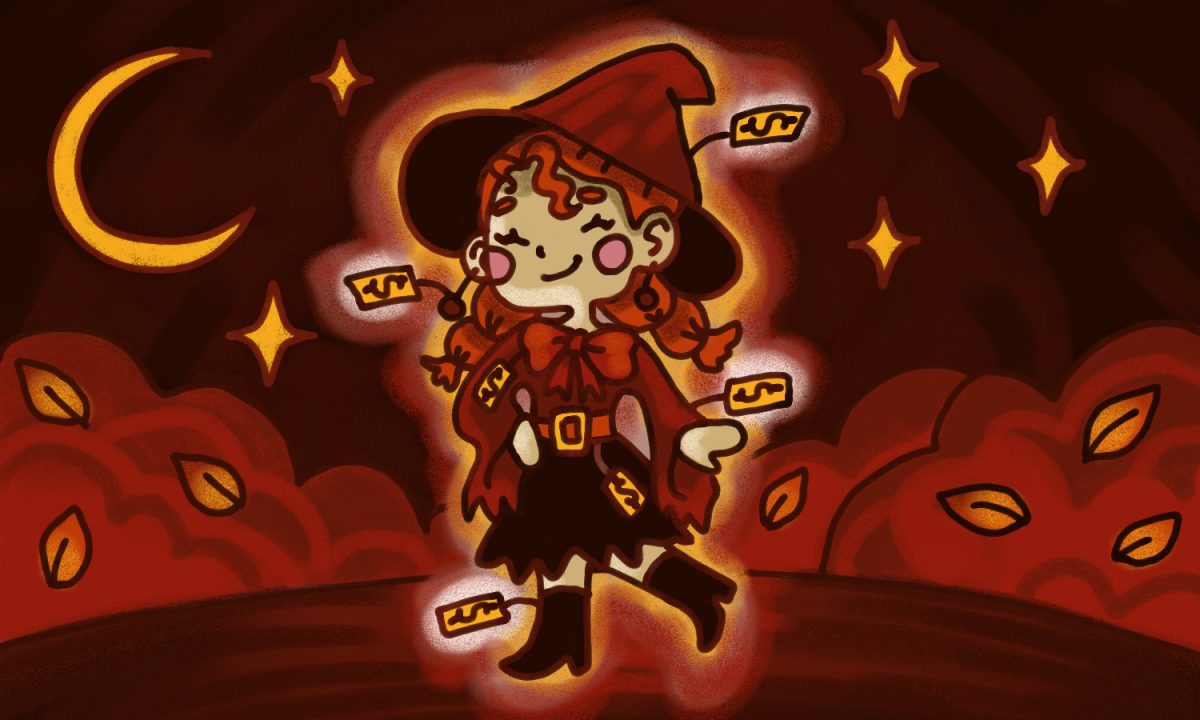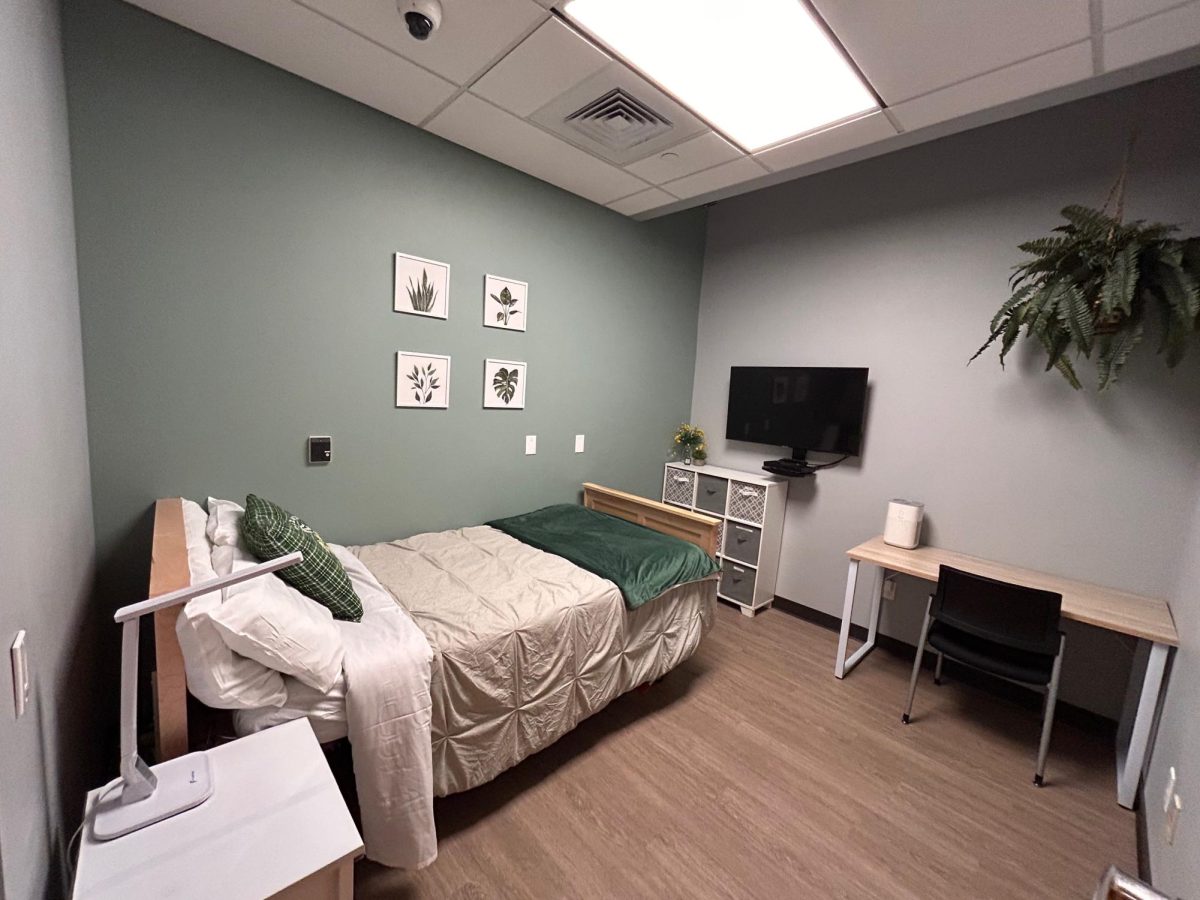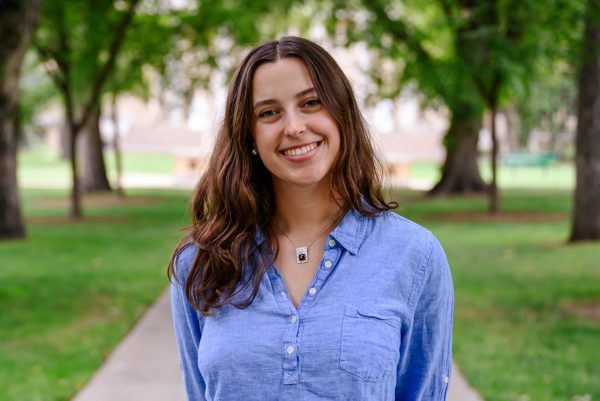Amid ongoing ecological conflict and debate, attendees gathered at Colorado State University’s Lory Student Center Theatre Wednesday, Oct. 30, to celebrate and discuss famed science writer Aldo Leopold’s magnum opus, “A Sand County Almanac.”
Leopold’s ecological perspective emerged at a time when little concern was given to the environment, with society more concerned about how nature could be of service rather than how society could serve nature.
Rick Knight, professor emeritus of the CSU Warner College of Natural Resources, gave opening remarks to a full theater. Knight began by stressing the relevance of ecological consciousness ahead of the Nov. 5 presidential election.
“Good citizenship is the only effective patriotism,” Knight said, quoting Leopold. “Patriotism requires less and less of making the eagle scream but more and more of making him think.”
Curt Meine, senior fellow with The Aldo Leopold Foundation, gave the keynote address. Meine presented the story of Leopold’s life, examining his background, his early works and what led Leopold to write “A Sand County Almanac.”
“We’ve got to strengthen the foundations of land stewardship.” -Lesli Allison, Western Landowners Alliance chief executive officer
Meine first presented a picture of the world Leopold lived in. Published in 1949, “A Sand County Almanac” entered an America fresh out of World War II and inching toward the Cold War. As Meine put it, it was a time when “the words ‘love’ and ‘respect’ were not common in academic literature.”
Leopold, born in 1887 in Burlington, Iowa, graduated from the The Forest School at the Yale School of the Environment in 1909. During his time as a ranger for the U.S. Forest Service, Leopold played a large role in creating the Gila Wilderness in 1924, the first official wilderness area in the country. During that same year, Leopold began teaching at the University of Wisconsin-Madison. This marked the beginning of his writing career, starting with the publication of the first recorded conservation textbook, “Game Management,” followed by various essays.
“Leopold’s essays have no numbers in them; they are poetry,” Meine said while projecting passages of Leopold’s works.
Even Leopold’s field journals were rather abstract and artistic, demonstrating an intersection of science and creativity. Leopold preferred a philosophical, almost intrapersonal approach to science.
In 1933, Leopold became interested in the great climate disaster now known as the Dust Bowl, during which he traveled to dilapidated homesteads with sandy soil, restoring them back to their proper environments. This experiment led to the publication of “A Sand County Almanac,” introducing the idea of a “land ethic” humans must abide by in order to benefit from nature.
While Leopold’s philosophical twist on conservation was the driving factor for the book’s success, publishers rejected the manuscript for “A Sand County Almanac” three times before finally agreeing to publish it. Meine said Leopold’s unique style continues to set him apart but also said the publishing world was initially unprepared for Leopold’s approach to conservation.
Works like “A Sand County Almanac” are — now more than ever — finding a growing importance in the climate canon.
“There are four waves of readers that are all represented in this room,” Meine said. “The eldest among us were Leopold’s contemporaries. … (‘A Sand County Almanac’) did not sell very well. … Wave two was baby boomers, coming in and grabbing those paperback versions that came out after ‘Silent Spring’ and ‘Earth Day.’ Wave four is the current wave, younger readers, who don’t have this in their background; it’s an assignment.”
Today, “A Sand County Almanac” finds itself in a world periled by climate change and ecological hardship. Lesli Allison, one of the evening’s panelists and the chief executive officer of the Western Landowners Alliance, said she believes Leopold’s work can inform future environmentalists.
“We’ve got to strengthen the foundations of land stewardship,” Allison said.
Reach Quinlan Kelleher at science@collegian.com or on Twitter @CSUCollegian.


